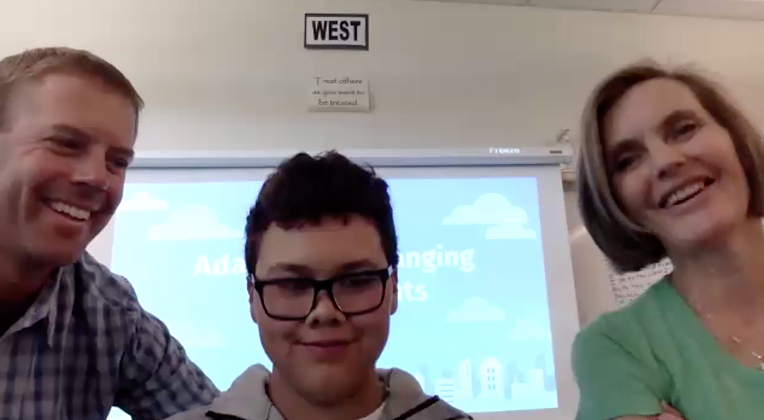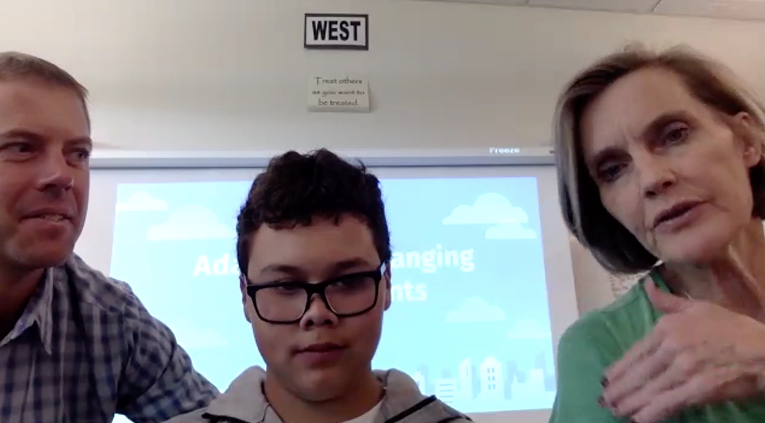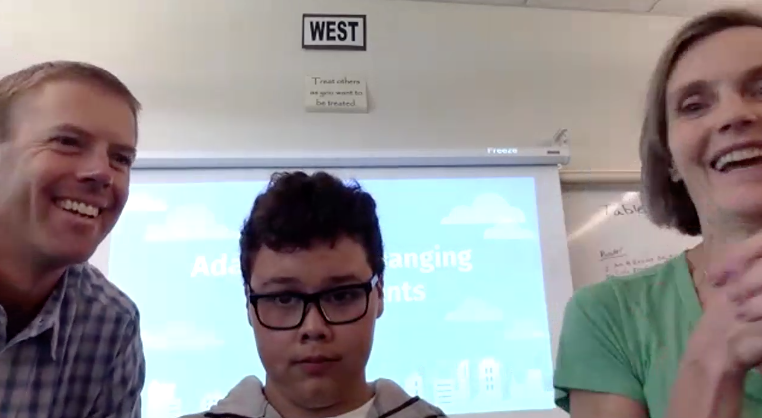Doing What Engineers Do
Trish Berry and Ryan Mihm teach the 6th grade, and in 2018 they were awarded an Eileen Finkel Innovative Teaching Grant “laying the foundation for all 6th grade students to participate in the Future City project” with makerspace tools. The project-based learning activity “gives students an opportunity to do the things that engineers do—identify problems; brainstorm ideas; design solutions; test, retest and build; and share their results” in an attempt to answer the question, “How can we make the world a better place?” To prepare students, they conducted a one-week crash course in assembly called “The Fastener Challenge.” Students engaged in lessons relating to safety, the use of tools, and common fasteners.
Ms. Berry teaches Humanities and Science, and Mr. Mihm teaches Language Arts and Humanities. We recently interviewed Mr. Mihm and Ms. Berry with one of their students, Devin Carrillo, who is now in 7th grade.
The Fastener Challenge
“The Fastener Challenge really started with remodeling the middle school with a makerspace,” began Mr. Mihm. “We wanted to help students learn to use everyday materials beyond duct tape and glue.” The Fastener Challenge was a one-day event where students and some of their parents learned how to use rivet tools, sewing machines, impact drivers, wrenches, ratchets, soldering guns, tin snips, wire snips, and screwdrivers. They pretended they were marooned on an island, and each station presented a different challenge. At one space they pretended a crab dragged in a hammer, and students were asked to build a simple plateform to elevate themselves above hungry creatures. At another station “pelicans dropped sewing machines” and at another “steel rivets and metal.” Students also used YouTube videos, such as “Soldering Tutorial” to ensure students could use the tools safely.

Students and parents enjoyed the day immensely. Peder Hansen, Summit School District STEM coordinator; Alicia Boles-Fry, business services; and Summit Cove STEM coordinator Mike Rupert came to help. Parents were there to ensure safety but also to have fun with it, and of course they did. “Both parents and students would say, ‘Wow! I’ve never used one of these tools!’ My favorite outcome on this project was seeing the students feeling empowered using the tools, and the maturity,” said Ms. Berry.
After this introduction, the teachers felt confident the students could use the tools safely. Next they challenged the students by asking, how can humans adapt to climate change? Students could choose any type of climate change anywhere in the world and try to create a mechanical solution to the problem.
Devin Carrillo had been keeping up with the wildfires in Arizona going on at the time. He was concerned about peoples’ experiences of their homes being damaged or destroyed. He wanted a fireproof house. He decided to make it out of metal because the metal wouldn’t burn. It also wouldn’t let flames inside the house, but if it did, a sprinkler system would put out the flames. Devin explained, “Metal gets hot, so the sprinkler system could go off if it to keep the house from overheating and cooking the people inside of it.”
Devin used rivets, shears, and metal. He used his hands to bend the metal. He built cardboard furniture and put it in the house. Devin said his biggest challenge was to not cut himself with the metal, trying to get rivets in the right spots, having no easy gaps and open areas in the seams so fire wouldn’t get through.
Let it Burn
Devin tested the house. He brought it to the school parking lot, and he used a blow torch to try and light it. It was an event—Devin’s class watched him. “It was a pretty big deal,” commented Ms. Berry.
Mr. Mihm said, “He had a good time trying to melt the house but it wouldn’t burn.”
“At first I doubted myself a little bit, I wasn’t sure it was going to work,” Devin said. “Once I got my hands on the blow torch and started lighting the model, I thought, this could really work! I was really surprised that nothing burned. The next day, I took a look inside the house, and nothing inside was burnt.”
He still has the house. “It’s super cool to look at it when I wake up every day. I built that. It was a success and it didn’t light on fire,” said Devin.

Tying it All Together
Ms. Berry said, “Building a future city was the goal. They did a city design project in math. The idea was to use Math, Humanities, and Language Arts together during the project. Students learned language and vocabulary, they logged reflections, and made predictions. It was easier to bring in all the content because of the crossover in what we teach because we’re familiar with more of the curriculum standards.”
Last year they piloted the project with 100 6th graders. This year, they hope to expand it to all 300 6th graders. Dr. Kaplan, the media specialist, hopes to use the Fastener Challenge as an orientation to the makerspace for all middle school students.
Devin would recommend this project to other students. “You never know who the next Einstein might be to solve other problems in the world,” he said.
“We are so appreciative of our community by passing the bonds, getting the funds we needed for the makerspace. We appreciate the Education Foundation of the Summit for providing us the money for tools,” said Ms. Berry.
Mr. Mihm added, “Yes, it’s fun to spend other people’s money buying tools!”

Current Challenges
Ms. Berry and Mr. Mihm are looking for ways to get the materials at a lower cost, and they need a storage place. They would love to get free scrap materials from the community. They’re also in need of shelving and plastic tubs. If you can help, please contact us.